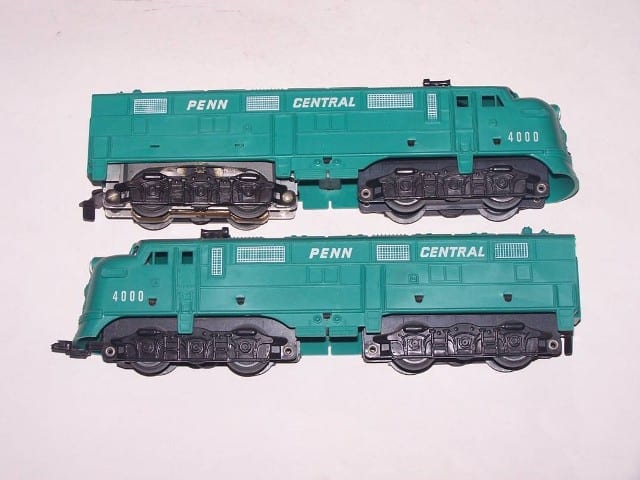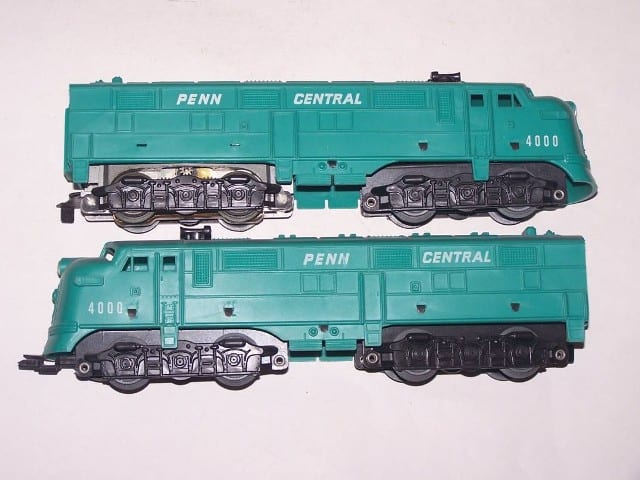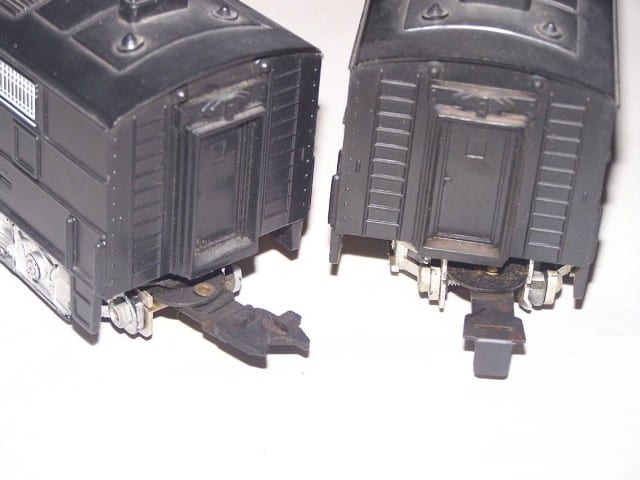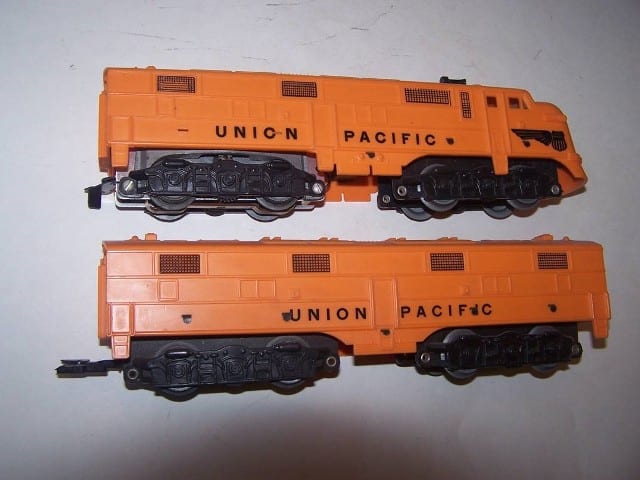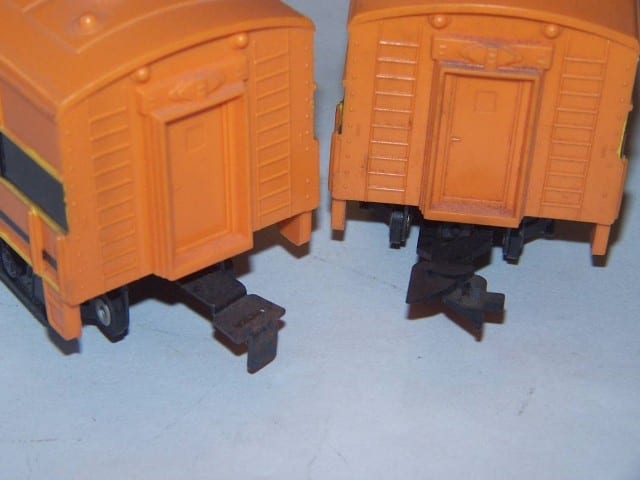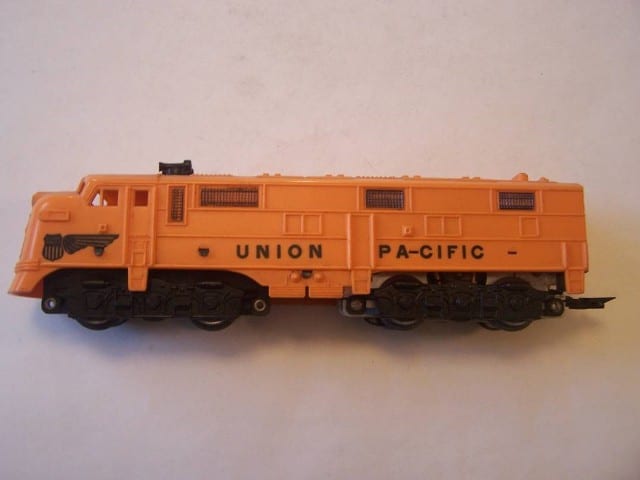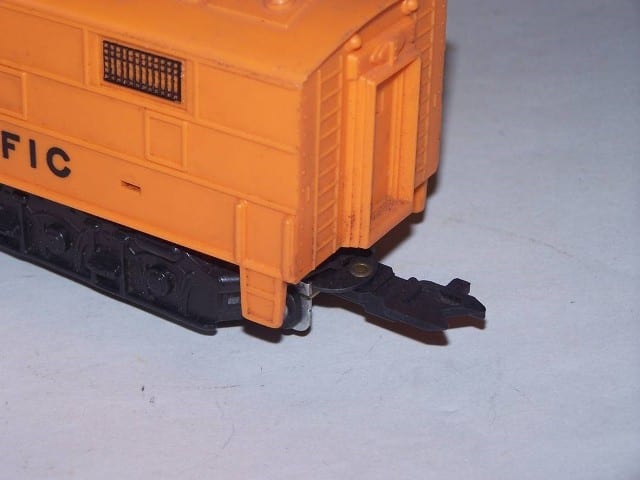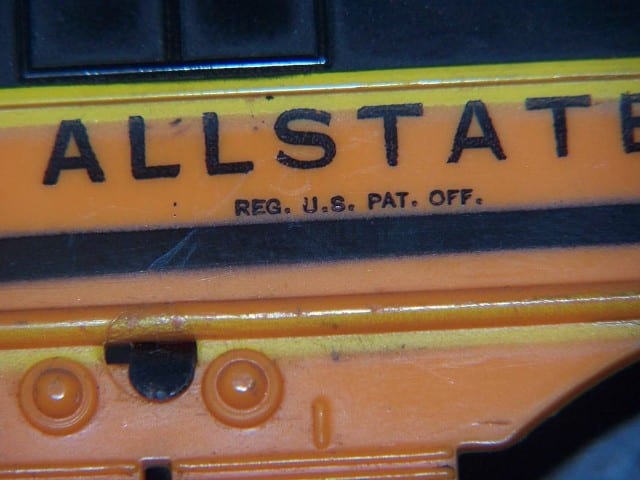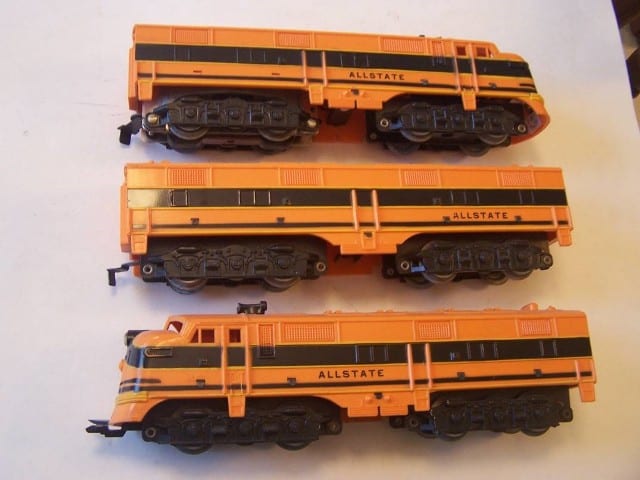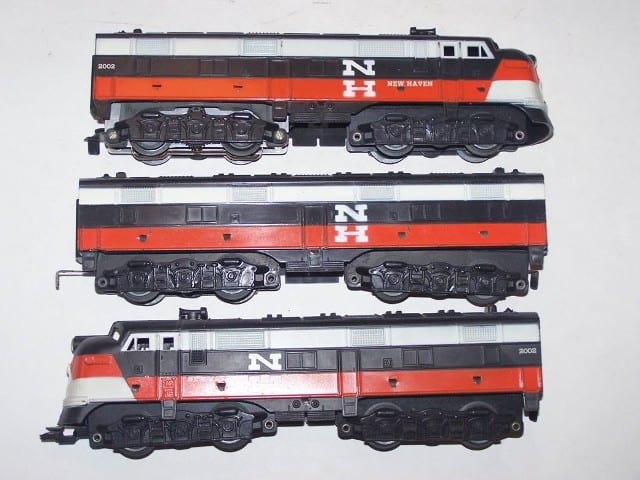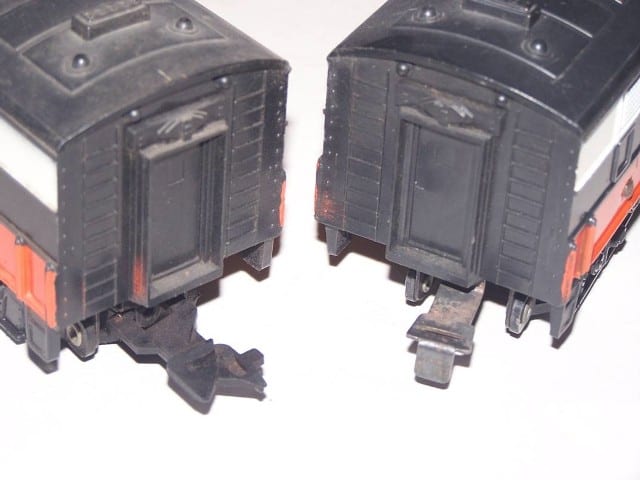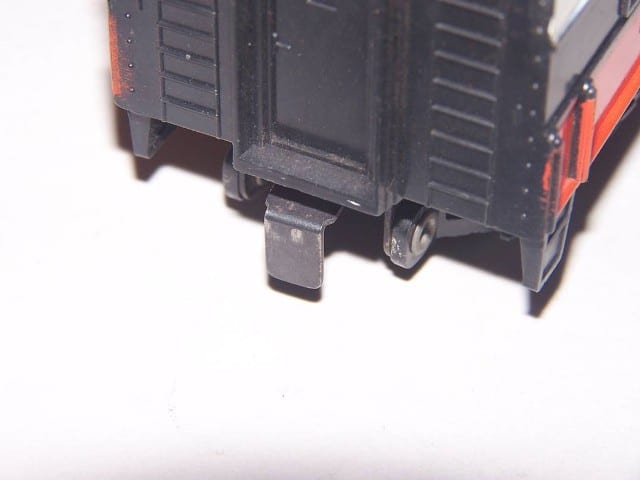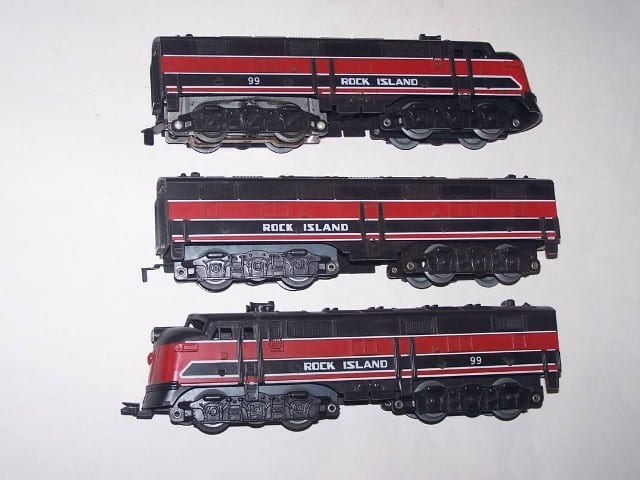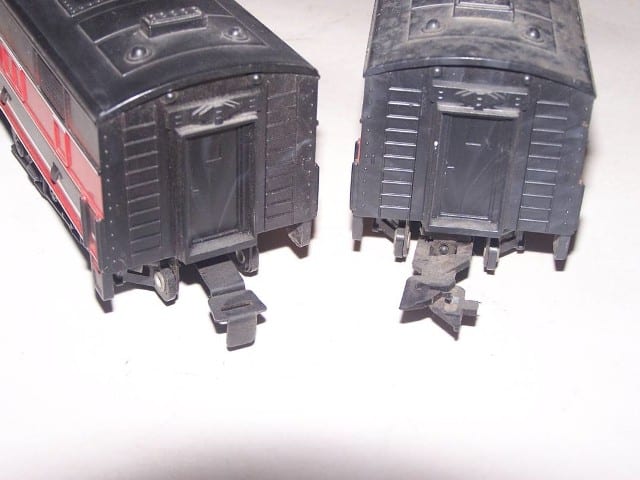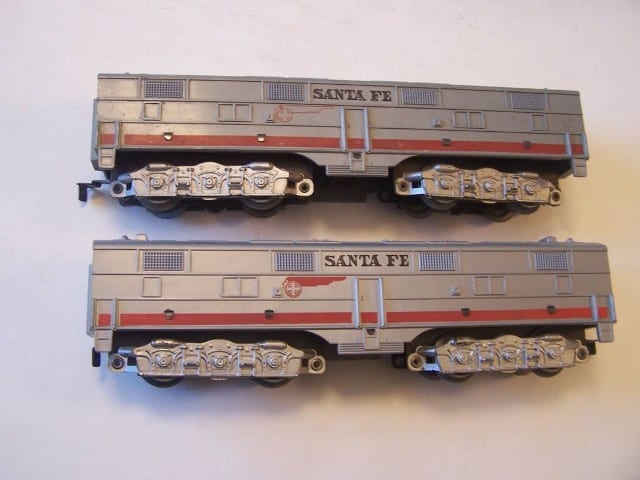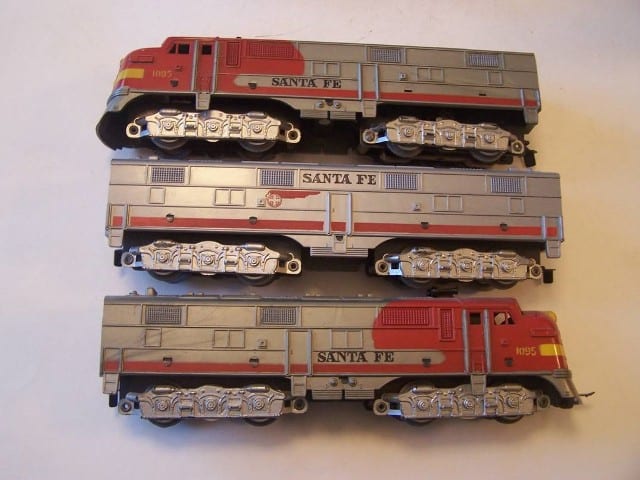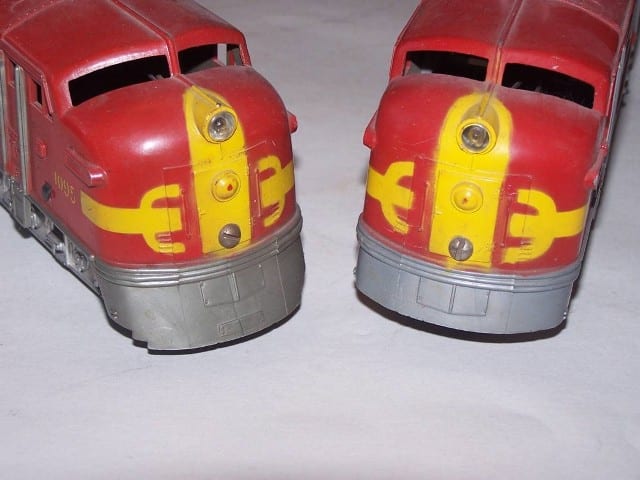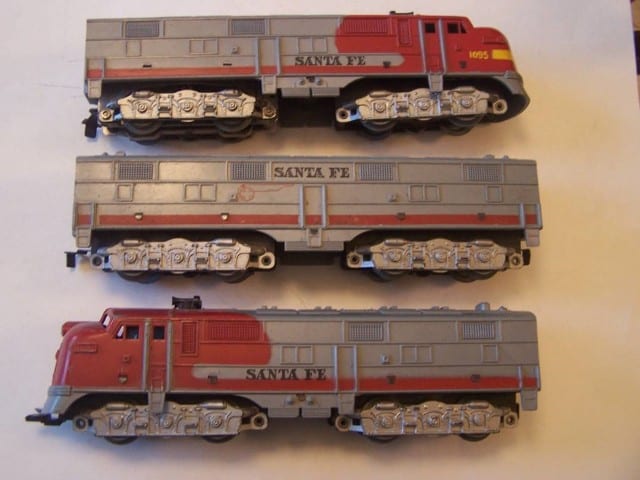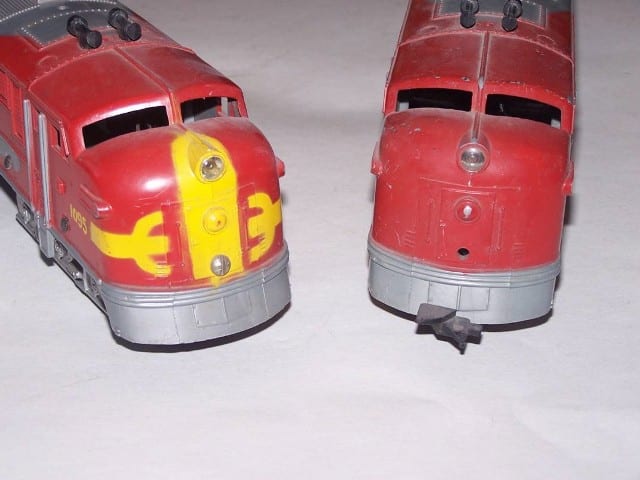Marx E-7 diesels, when and where?
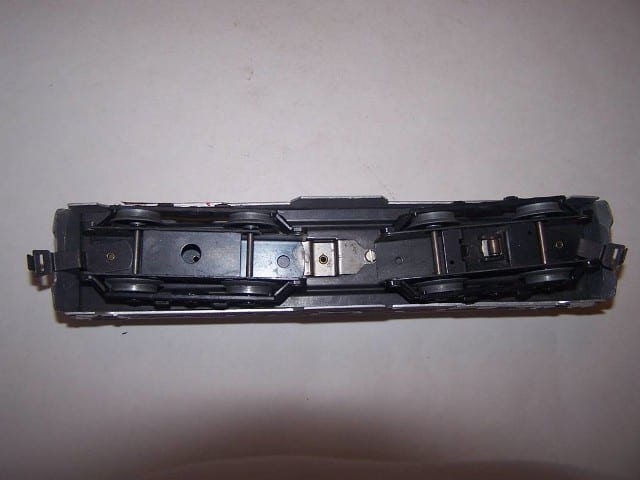
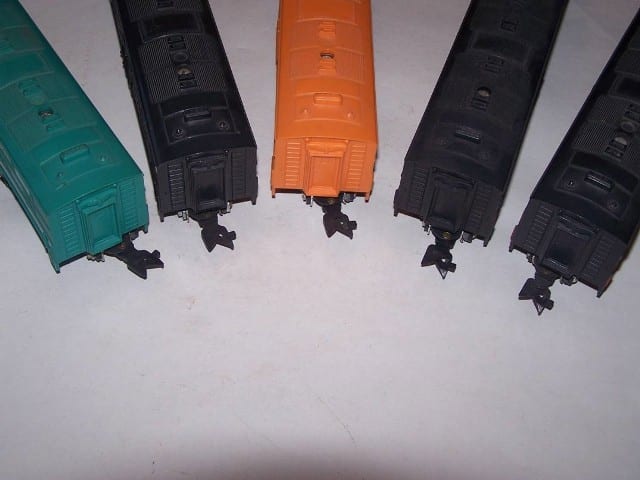
By John Torgerson [email protected] Winter 2016
Several years ago I wrote a few articles about the Marx E-7 diesels. After collecting them for many years I realized it was difficult to determine just what was produced and what was bogus. Many collectors have sought unit’s that actually don’t exist or were never produced by Marx. A couple good examples are the B unit for the NYC and PC. Marx never made any. Therefore I thought the best idea would be to make a chart that would list all the variations and call out just what was produced. Using the chart it’s possible to determine what to seek and what to disregard.
The pictures shown in this article will be helpful as well. Marx, also, produced different road names with the same number too, making it even more confusing to find the correct units. An example of that is the number 4000. Both the NYC and PC used that number.
Another difficult situation concerns the lack of numbering on a couple road names. The UP and Allstate units have no number on the A unit at all!!! Ya just gotta know what they are!
Then there’s the dummy A units. They are the same road name of course but also use the same number so there’s no distinction between power and dummy units. Same applies to the Budd car. Another situation arises with that unit. Where to place it? It’s not really an E-7 but it uses the same motor. There’s also a dummy unit if you can find one. They are VERY difficult to locate and quite expensive to purchase. Seems they were actually salesmen samples and very few got out to the public. I’ve listed them as prototypes on the chart for lack of a better description since they are so rare. Another Budd car variation concerns the window strip. There are a total number of four with two different sets on each unit. You’ll need to remember which one you have in order to find the other ones.
Another unit that’s difficult to find is the third PC (Penn Central) with painted grills and no white stripe. It is very late production and only available as direct from the factory, not an over the counter sale. The only PC unit available over the counter was the single A unit in the Mohawk set. It also came with the hard to find plastic fork couple on the rear of the unit. There were five road names that came with the plastic fork coupler but there’s always the exception. Some sets that included the single A unit had the typical tab and slot coupler rather than the plastic fork design. That coupler was quite fragile as well and may have been replaced by a repair center at some point. The tab on the tab and slot coupler fits neatly into the slot on the plastic coupler of the cars to be hauled on the layout. What needs to happen is the big hand in the sky is used to couple and uncouple the engine/car. One more situation is notable with the plastic fork coupler on the single A unit is the non tilt arrangement. The coupler is a somewhat complicated mechanism and apparently Marx was unable to make the tilt method work on those units. It was easily broken and finding one intact and operational isn’t easy.
The B units were not produced for every road name. Some road names came in AA, AB, and ABA. When the set was ABA, then the B unit had a tab and slot or just a tab coupler on each end. The plastic fork coupler was used for the AB configuration only, since it was more costly to produce. Marx was all about saving a few pennies. In fact the lack of yellow paint on the nose of the 1095 Santa Fe was a result of Sears trying to save some money on each unit. It cost X dollars to paint the yellow on the nose of the dummy unit and Sears didn’t want to spend that extra few pennies to do so. Marx cooperated with the lack of yellow paint but drew the line at not including trucks!!!
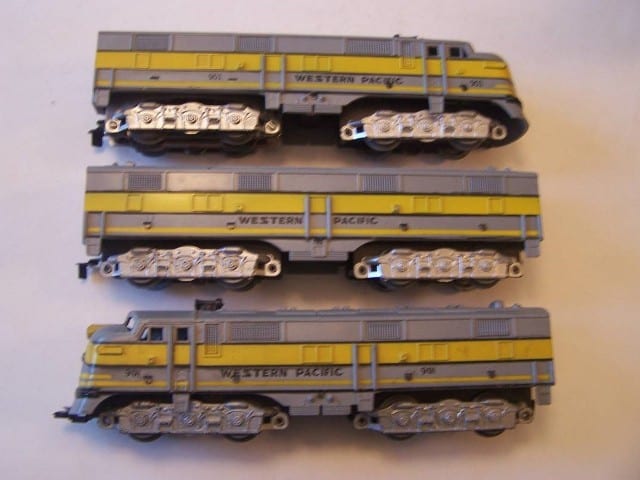
Among the most difficult to find is the 901 gray and yellow Western Pacific ABA. Since the 901 number was also used on the green and yellow version, that just adds to the confusion. Color must be taken into consideration as well as condition.
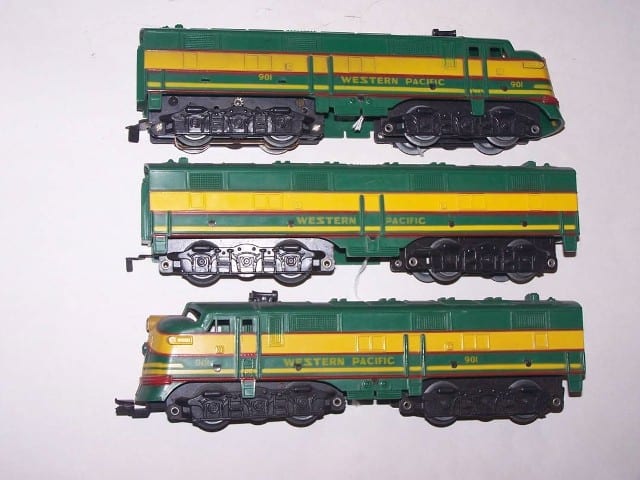
The green/yellow version is fairly common but not so the gray/yellow. From what I’ve found over the years the gray/yellow version was the passenger set version and the green/yellow was mainly used in freight sets, but not always. Again Marx is unpredictable. The very elusive WP coach was included in one set, 44464 and was powered by the green/yellow AB configuration. Confused yet?
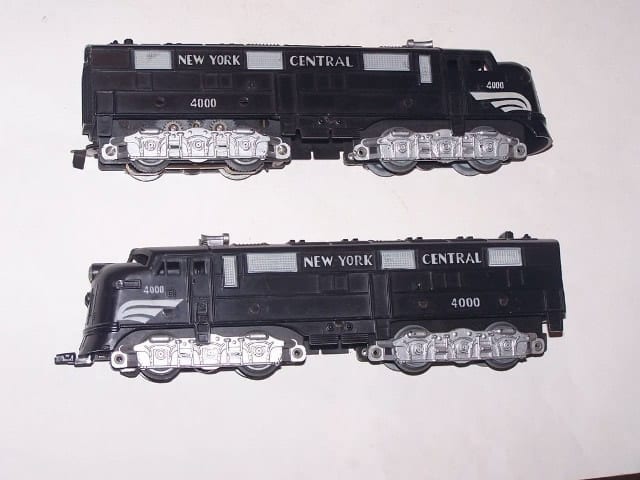
Another factor to consider is the NYC design. It came as AA and single A, both using the same number again. Yet the two are considerably different. The AA has a dummy unit included and has what’s commonly referred to as the long flags on the nose. The single A had the shorter flags. This road name never had a B unit produced either. This is also the only set that had silver horns. All the rest were black.
And then there’s the Union Pacific. Now there’s an oddity. No nose number and Marx never did produce a dummy A unit. Occasionally a dummy A unit is advertised for sale but if you look inside there’s always residue of the motor mount plate been removed or it’s still there. Conversion can be done, but usually results in the shell being cracked in the process. So if you’re looking for a dummy A UP, time to move on to another quest.
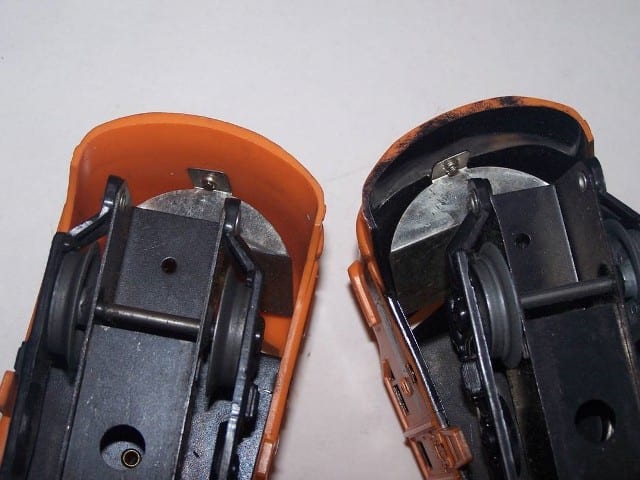
One more variation on this road name and the Allstate is the inside of the nose being painted black on some engines. Appears only the power unit was painted since there’s no headlight in the dummy A unit. If you ever run your UP or Allstate at night with the headlight lit, you’ll know right away why the black paint inside. The orange shell was terrible for carrying the light thru the plastic and would look like the entire nose was aglow.
The Allstate road name is quite desirable. There are two versions available. The very first production had the statement under the Allstate name on the side of some A units, REG. U.S. PAT. OFF. Indicating tht is was a registered trademark. The writing is quite small and hardly noticeable at first glance. Quite difficult to find, it was not included on each A unit even in sets. I have one set that it is on both A units and another that it is only on the dummy unit.
The New Haven is probably the most colorful set Marx produced, also coming in AA, AB, and ABA. Plus the plastic fork coupler version single A. one of the better looking sets Marx produced.
One more road name to consider is the 99 Rock Island. It came in single A with fork coupler, an AA, AB, and ABA. Also one of the more colorful and quite easily found sets Marx produced.
Finally I’ll touch a bit more on the 1095 Santa Fe. It was the first plastic diesel Marx produced, and as such the most variable. The first sets had the long pilot (cow catcher) that proved to be difficult to remove from the mold and required the use of a metal fork coupler. The pilot was too long for the plastic version to work and Marx hadn’t quite developed the plastic version for the dummy A unit yet. The coupler from the number 21 metal Santa Fe was being used on the first plastic units. Now for a really hard unit to find. Check out the side view of the 1095 with just two slots. At first Marx had a removable insert to distinguish between power and dummy shell. Doing the switch every time the power and dummy shells were run thru the mold machine was apparently more trouble than it was worth so the production line was advised to just leave the insert in place. What difference did it make to kids playing with the trains if the unit had four slots/side or two? There was also a difference in lettering. The early units were heat stamped vs. the later ones that were rubber stamped. Then there’s the number on the nose.
The early version had a small number just above the number board while the later ones had a larger number behind the yellow stripe. One more thing to mention concerns the Santa Fe B unit. If you look at the headdress some were produced with the headdress filled in while other’s had just the outline. Any guesses as to why? Probably a cost saving measure as usual with Marx. A penny here and there made a big difference over the course of years produced.
Finally, condition is most important with these fragile units:
- First thing to look for is/are broken steps, then look for a cracked nose. The crack usually comes from a header off a layout or from tightening the headlight carrier too much. It may also be from a collision from kids playing with them.
- Many times horns are missing but they are available as repro, as are steps, but the steps are readily noticeable. The color is a great match but the attachment is by tab beyond the shell. Trying to attach them by gluing is difficult so the method sold by Bob Grossman and developed by Paul Gailey several years ago is probably the best option.
- A unit missing a step doesn’t look too good but with a repro it does.
- One more item to check is the rear overhang for chips. That’s quite common and nearly impossible to repair. A chip is a chip no matter what is done to repair it.
There are several road names to find a complete collection and some are quite difficult but it’s the challenge that makes the chase worth the effort. That and all the nice folks you meet along the way. Good luck and hope this article, pictures, and chart will aid you in finding what’s missing in your collection.



